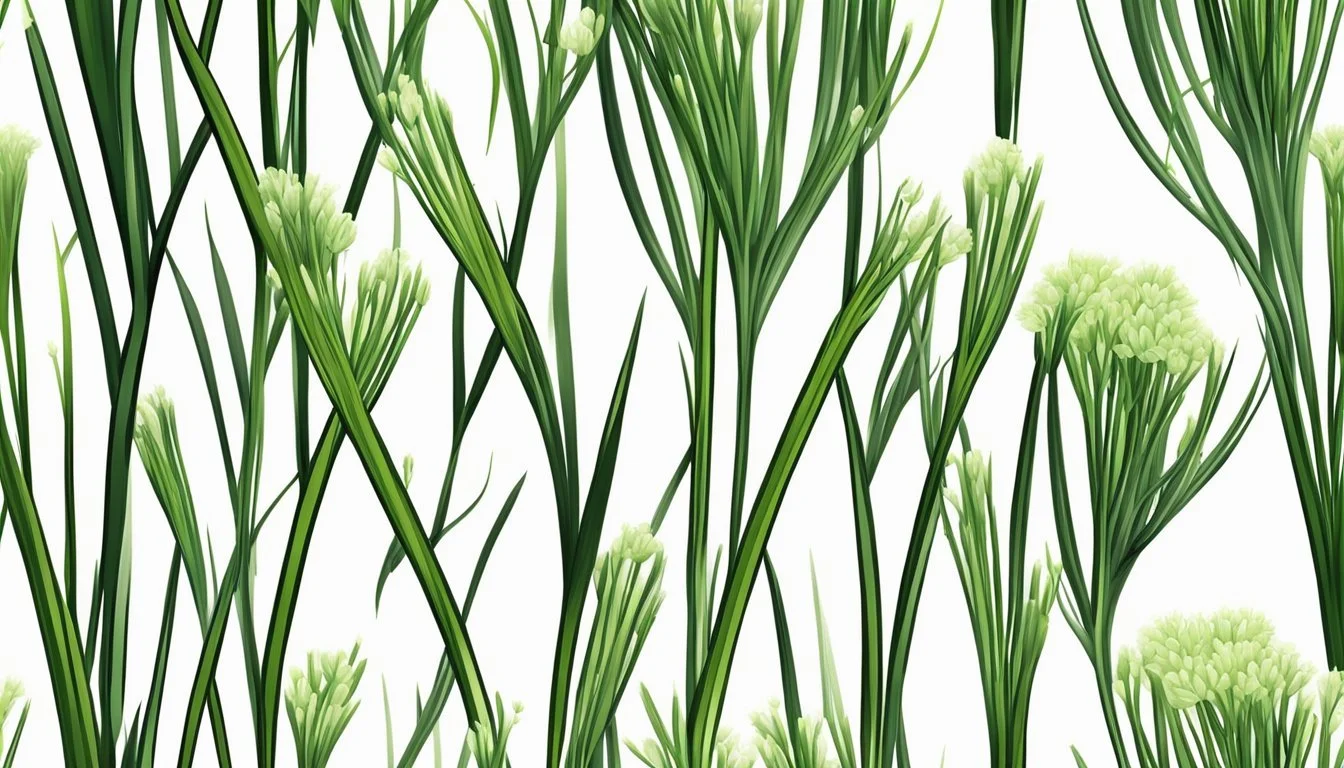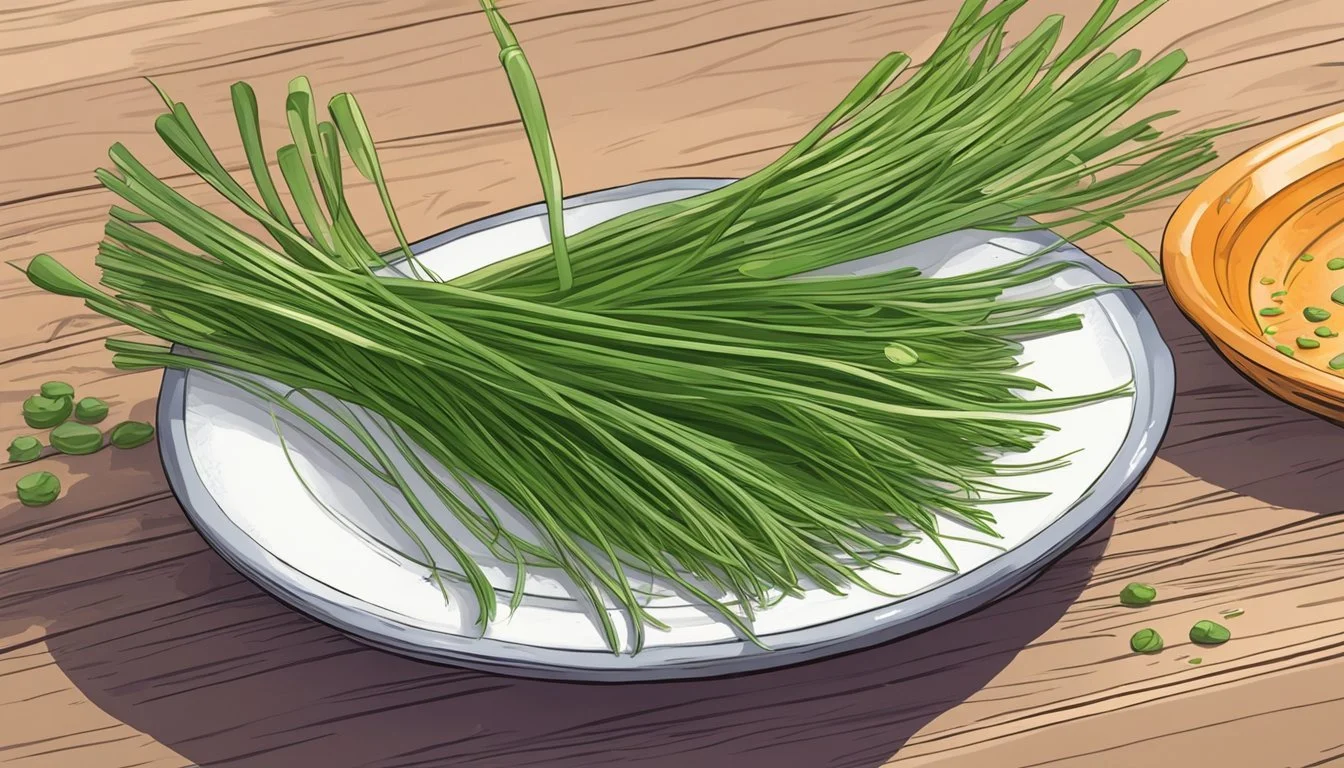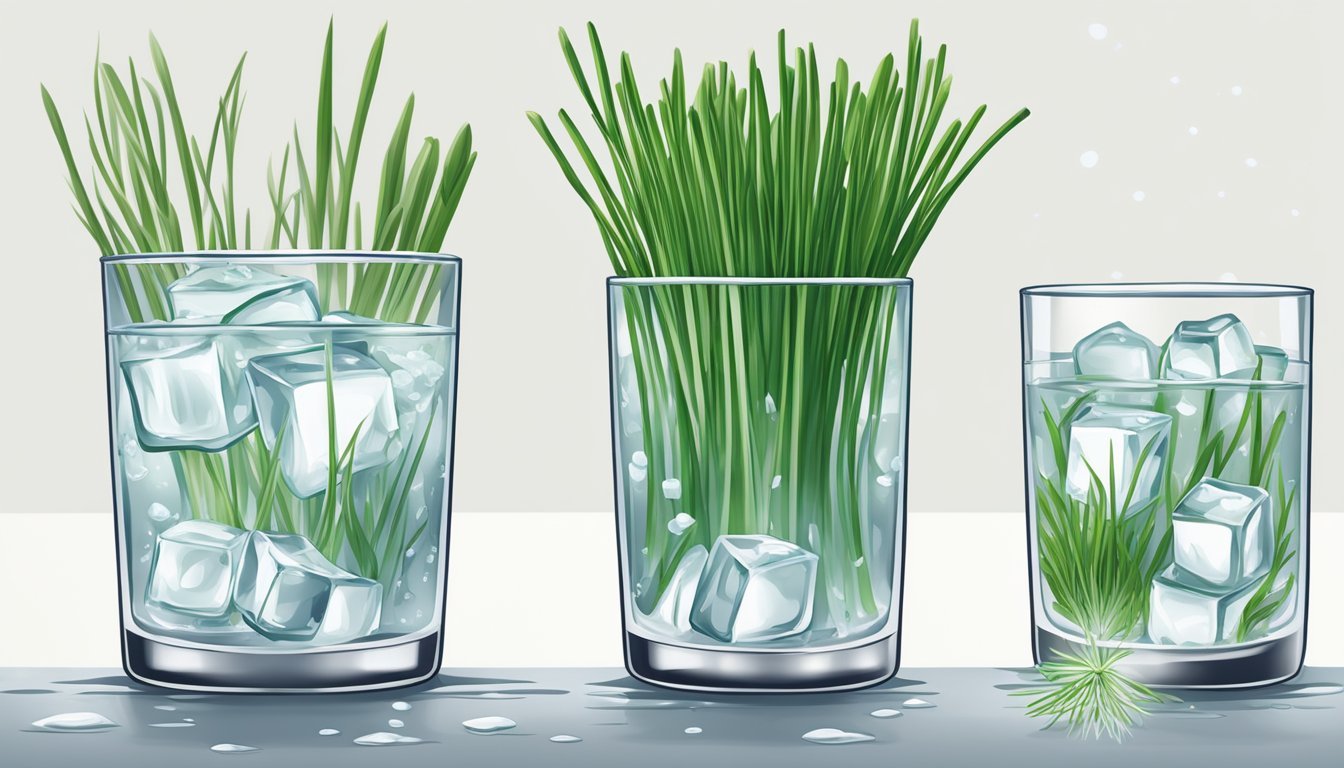Reviving Limp Chives
Steps to Restore Their Crispness and Flavor
Chives, the dainty and delicate herb, are a staple in kitchens around the world, cherished for their subtle onion flavor and vibrant green color. These fine herbs serve as a versatile garnish, enhancing a plethora of dishes, from soups and salads to baked potatoes and deviled eggs. However, their freshness is fleeting, and sagging, limp chives are a common, yet avoidable, kitchen disappointment.
Mastering the art of reviving chives is an essential skill for any culinary enthusiast looking to maintain the integrity of their dishes with fresh garnishes. It is not merely about aesthetics; crisp chives offer a burst of flavor that cannot be replicated by their wilted counterparts. With the right techniques, one can breathe life back into limp chives, ensuring each snip of herb elevates the dish as intended.
Revival methods hinge on understanding the delicate nature of fresh herbs like chives. Storing them properly can extend their vigor, but knowing how to rejuvenate them when they do wilt is indispensable. This culinary skill is straightforward and efficient, allowing even the busiest of cooks to sustain the full, potent taste and crisp texture of their chives without resorting to discarding them or settling for a less than ideal presentation.
Understanding Chives
Chives are a highly regarded herb in the culinary world, known for their distinct flavor and nutritional benefits. As a member of the allium family, they add aromatic essence to dishes and provide a valuable source of vitamins and minerals.
Culinary Profile
Chives offer a delicate yet distinct flavor that is somewhat similar to onions but milder and less pungent. Renowned for their bright green, tube-like blades that are both tender and crisp, chives are often used fresh to maintain their vibrant taste and color. As a versatile herb, they are included in a diverse array of culinary creations:
Garnishes: Widely used to add a bright color and a hint of flavor.
Flavoring: Incorporated into salads, egg dishes, soups, and sauces.
Infusions: Chive-infused oils can impart subtle aromas to dishes.
Nutritional Value
Chives boast a range of nutritional benefits that elevate them above basic garnishes. They contain important nutrients such as vitamin C and calcium, contributing to their overall health value.
Nutrient Benefit Vitamin C Supports immune system and skin health Calcium Essential for bone health
The nutrient density of chives makes them an excellent addition to a balanced diet—not only do they enhance the flavor profile of a meal, but they also contribute beneficial vitamins and minerals.
Selecting and Storing Chives
Selecting the freshest chives and employing the right storage methods can extend the shelf life of these delicate herbs while maintaining their crisp texture and vivid flavor.
Purchasing Tips
When purchasing chives from a grocery store, one should look for rich green, taut stalks that exhibit no signs of wilting or yellowing. Vibrancy in color and a fresh, strong scent are good indicators of quality. Avoid any bunches with slimy or black spots.
Storage Techniques
Short-term storage: Fresh chives should be kept in the refrigerator. One effective method is to wrap the chives in a damp paper towel and place them inside an airtight container or a resealable plastic bag. Alternatively, chives can stand upright in a glass of water, covered loosely with a plastic bag, mimicking a vase of flowers.
Long-term storage: For extended storage, chives can be frozen. The optimal approach is to:
Dry the chives thoroughly with a paper towel.
Finely chop the chives into small pieces, approximately 1/4 inch in length.
Spread the chives on a parchment-lined baking sheet.
Freeze them until solid to prevent clumping.
Once frozen, transfer the chives into freezer bags, pressing out excess air before sealing.
Stored correctly, chives can retain their quality for several months.
Reviving Limp Chives
When chives lose their vigor, becoming limp and less visually appealing, gardeners and cooks alike can employ methods to restore their crispness. Immediate revival techniques can provide a quick fix, while long-term rejuvenation ensures healthier plants that maintain their structure in the future.
Immediate Revival Methods
Certain procedures offer a swift solution to wilted chives. One can start by trimming any brown or damaged ends, then follow these steps:
Cold Water Bath: Soak chive sprigs in a bowl of cold water for about 10-15 minutes to rehydrate them.
Paper Towels: Gently wrap the chives in a moist paper towel to provide a consistent moisture level without oversaturation.
Salad Spinner: After soaking, use a salad spinner to remove excess moisture, ensuring the chives are not too wet, which can contribute to limpness.
Long-Term Rejuvenation
Maintaining plant health is crucial for preventing chives from becoming limp in the first place. Healthy chives require:
Appropriate Watering: Chives need regular watering, but avoid both overwatering and underwatering. Consistently moist soil without waterlogging is key.
Proper Lighting: Ensure that chives receive sufficient light, as inadequate sunshine can weaken plants and lead to drooping.
Optimal Temperatures: Preserve chives within their ideal temperature range (40-85°F or 4.4-29°C) to avoid temperature stress causing limping.
Pruning: Regularly trimming chives stimulates growth and can help prevent floppiness by encouraging sturdier stems.
Preparing Chives for Use
Before incorporating chives into dishes, it is essential for a cook to clean and trim them properly, and select the right chopping technique to ensure they enhance the flavor of the meal without overpowering it.
Cleaning and Trimming
A cook begins by cleaning chives thoroughly to remove any dirt or debris. They place the chives under cold running water, gently rubbing them between their fingers. After washing, they pat the chives dry with paper towels to remove excess moisture, which could affect their crispness. Next, the cook uses kitchen scissors or a sharp knife to trim away any wilted or browned ends from the chives, ensuring only the freshest parts are used.
Chopping Techniques
When it comes to chopping chives, the technique depends on the desired outcome. For a fine chop, a cook might use a sharp knife to slice the chives thinly, which is ideal for a delicate garnish. If they require a more substantial cut for dishes like omelets or vinaigrettes, kitchen scissors are an excellent tool for cutting chives directly into the dish. For larger quantities, a food processor can be used, but it’s important to use the pulse function to avoid turning the chives into a paste. In all cases, chopping chives right before use is recommended to maintain their flavor and crisp texture.
Incorporating Chives into Dishes
Chives, with their mild onion flavor, enhance a multitude of dishes, whether as a garnish or as part of a compound flavor component. When used wisely, they can elevate the taste and visual appeal of salads, soups, proteins, and more.
Flavor Pairings and Combinations
Salads: Chives pair exceptionally well with the fresh flavors of a garden salad. They can be snipped over the top or whisked into dressings for a subtle onion note without overwhelming the palate.
Soups: For soups ranging from a hearty chicken noodle to a delicate cream of potato, adding freshly chopped chives just before serving ensures a burst of flavor and color without loss due to cooking.
Dumpling Sauce: Incorporating chives into dumpling sauces adds a freshness that complements both meat and vegetarian fillings.
Compound Butter: Chives folded into softened butter create a versatile compound butter, perfect for melting over steamed vegetables, grilled chicken, pork, or beef to infuse a gentle savory essence.
Eggs: Scrambled, fried, or folded into an omelet, eggs benefit from the addition of chives. The herb subtly enhances the eggs without dominating the flavor profile.
Proteins: Chives can also be used as a seasoning for meats. They particularly enhance the flavors of:
Chicken: Sprinkled over roasted or grilled chicken, chives can add a note of complexity.
Pork: Mix them into marinades or dry rubs to balance the richness of pork dishes.
Beef: Garnish beef entrees with chives, or include them in sauces for an added layer of flavor.
Creative Cooking Ideas
Garnishes: A liberal sprinkling of chives can provide not only a hit of flavor but also a dash of vibrant green that makes a dish look more appealing.
Garnish for Proteins: Top cooked meats with chives to enhance both the visual presentation and taste.
Garnish for Eggs: Use chives to add a pop of color and delicate onion flavor to egg-based dishes, such as quiches (What wine goes well with quiche?) and frittatas.
Infused Oils: Chives steeped in high-quality oils can be drizzled over salads or used as a base for vinaigrettes.
Breads and Crackers: Bake chives into homemade breads or sprinkle them atop crackers before baking for an aromatic twist.
Utilizing chives in these various ways can truly transform a dish, providing freshness, flavor, and color that appeal to both the eye and the palate.
Preserving and Extending Freshness
To ensure that chives maintain their crisp texture and robust flavor, proper preservation methods like drying and freezing are essential.
Drying Methods
Drying chives effectively preserves their flavor for future use. Dehydrators are ideal as they circulate air at low temperatures, ensuring even dehydration. Air fryers can be set to a dehydrating function to achieve similar results. To dry chives:
Wash and thoroughly pat dry the fresh chives.
If using a dehydrator, spread the chives out on the tray in a single layer.
Set it to the appropriate herb-drying setting, usually between 95°F to 115°F (35°C to 46°C), and process until completely dry, which could take several hours.
If using an air fryer, ensure it has a dehydration option and follow the manufacturer's instructions for herbs.
Keep in mind that chives should not be exposed to high heat as it can diminish their flavorful oils.
Freezing Techniques
For preserving the fresh characteristic of chives, freezing is an excellent method. To freeze chives:
Chop the clean chives into fine pieces, approximately 1/4 inch long.
Spread the pieces on a baking sheet lined with parchment paper to prevent sticking.
Place the baking sheet in the freezer until the chives are fully frozen, to avoid clumping.
Transfer the frozen chives to an airtight container or resealable bag and return them to the freezer.
Frozen chives are best used within a few months for optimal flavor and are ideal for incorporation in cooked dishes.
Avoiding Food Waste
In the fight against food waste, one can employ practical strategies to ensure that perishable items like chives and other greens are used efficiently. These methods enhance both culinary skills and kitchen sustainability.
Utilizing Leftovers
One can significantly reduce food waste by getting creative with leftovers. Here are a few straightforward suggestions:
Chop: Utilize a food processor to finely chop leftover chives, making them easy to sprinkle over dishes.
Freeze: Store small batches of chives in the freezer. This can preserve their flavor and make them readily available for future meals.
Mix: Incorporate leftover chives into salads or as garnishes to add a fresh, flavorful kick to any dish.
Resourceful Cooking Practices
Adopting resourceful cooking practices can minimize waste and make the most of all ingredients. Consider the following techniques:
Plan Ahead: Purchase or prepare greens and vegetables in amounts that one will realistically use, to prevent spoilage.
Store Correctly: Understanding proper storage methods for different vegetables can extend their shelf life and maintain crispness.
Cook in Batches: Make larger quantities of commonly used items like dressings or dips that can incorporate chives, then store in portions for later use.
Safety and Hygiene
Maintaining safety and hygiene in the kitchen is paramount, especially when reviving limp chives to ensure they're crisp and flavorful garnishes. Proper handling, cleaning, and storing practices prevent contamination and safeguard against foodborne illnesses.
Best Practices in Kitchen Hygiene
Before one begins handling chives, they should make sure that their hands are thoroughly washed with soap and water. This simple step is crucial for preventing the spread of bacteria and germs. All surfaces and tools such as cutting boards and knives used for trimming chives should be sanitized as well to eliminate any potential contaminants.
Hand Washing Steps:
Wet hands with clean, running water
Apply soap and lather for at least 20 seconds
Rinse and dry hands with a clean towel
Equipment Sanitization:
Clean surfaces with hot, soapy water after usage
Use a disinfectant or a bleach solution to sanitize
Rinse with clean water and allow to air dry
Chive-Specific Considerations
When handling chives, one must ensure that they are cleaned thoroughly to remove any dirt or potential pesticides. For optimal safety, chives should be rinsed under cold, running water. While washing, one should gently rub the chives to dislodge any adherent particles. For extra precaution and to help in the crisping process, trimming off the root ends before washing is advised as it removes the parts that are more likely to harbor soil and bacteria.
Chive Cleaning:
Rinse chives under cold, running water
Gently agitate to remove dirt particles
Pat dry with a clean paper towel or use a salad spinner
Reviving chives not only involves rehydrating them but also making sure that the process is done hygienically, ensuring that the end garnish is not only crisp and delightful but also safe for consumption.
Advanced Chive Techniques
In this section, we explore sophisticated methods for utilizing chives as garnishes and enhancing the flavors of oils and vinegars with their essence.
Professional Garnishing
Skills in fine garnishing entail precise cuts and thoughtful placement to enhance both the appearance and taste of dishes. For garnishes, chefs meticulously select vibrant green chives that offer a delicate texture. They often practice the technique of finely chopping chives into even, miniscule pieces using a sharp chef's knife, ensuring a pronounced burst of flavor without overpowering the dish.
Consistency: Every cut should be uniform, measuring 1/8 inch or less in length.
Application: Delicately sprinkle the garnish atop dishes moments before serving to maintain their crispness.
Infusing Oils and Vinegars
For infusing oils and vinegars, chefs select high-quality base ingredients to complement the fresh, oniony flavor of chives. Infusion involves steeping finely chopped chives in oil or vinegar, often enhanced with salt, pepper, or sugar to balance flavors.
Oil Infusion:
Use a neutral oil like canola or grapeseed as a base.
Combine oil with chives, salt, and a pinch of sugar for a nuanced profile.
Vinegar Infusion:
Choose a white wine or apple cider vinegar for a subtle tartness.
Infuse with chives and a dash of cracked pepper for a sharp, herby kick.
Both techniques require patience, as infusions reach optimal flavor after resting for one to two weeks in a cool, dark place. Chefs utilize these infused concoctions to artfully elevate sauces, dressings, and marinades with the essence of chives.
Conclusion
To ensure delicate herbs like chives regain their vitality, chefs can employ simple reviving techniques. When chives appear limp, immersing them in cold water can restore their crispness. This process not only brings back the fresh appearance but also preserves their distinct flavor. Utilizing such methods instills confidence in the kitchen, knowing that even herbs that seem past their prime can be rejuvenated.
The culinary uses of chives are extensive; they enhance dishes with their mild onion-like taste. For optimal flavor, a chef may add them towards the end of cooking to prevent flavor loss. With revived chives, any dish can be uplifted, giving it a gourmet touch.
Proper Care for Chives:
Revive: Place limp chives in cold water to restore their crisp texture.
Store: Keep them at cool temperatures in airtight containers to maintain freshness.
Use: Add chives as a garnish or flavoring agent in a variety of dishes from soups to omelets.
In conclusion, knowing how to care for and revive chives allows for maximum use of these fresh herbs' potential, offering a burst of flavor to any meal.









